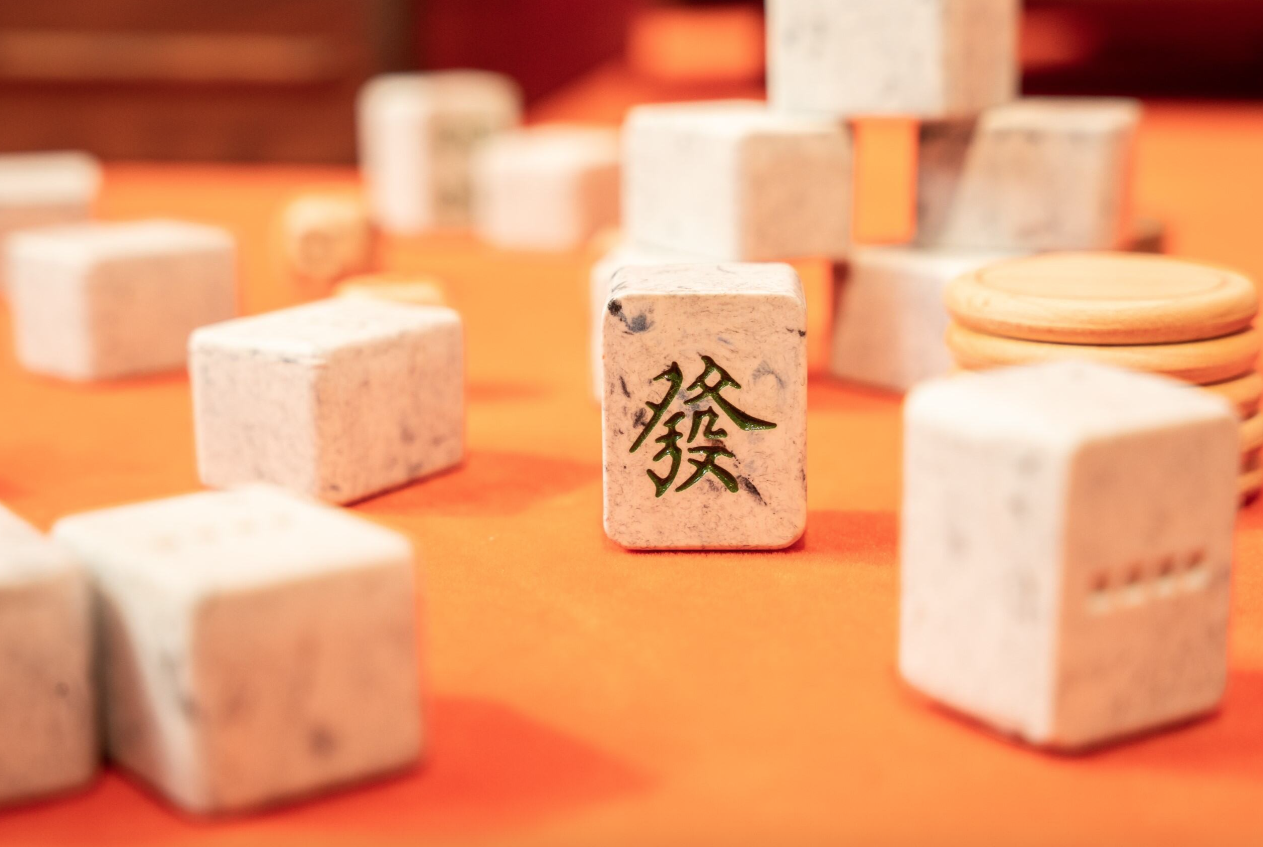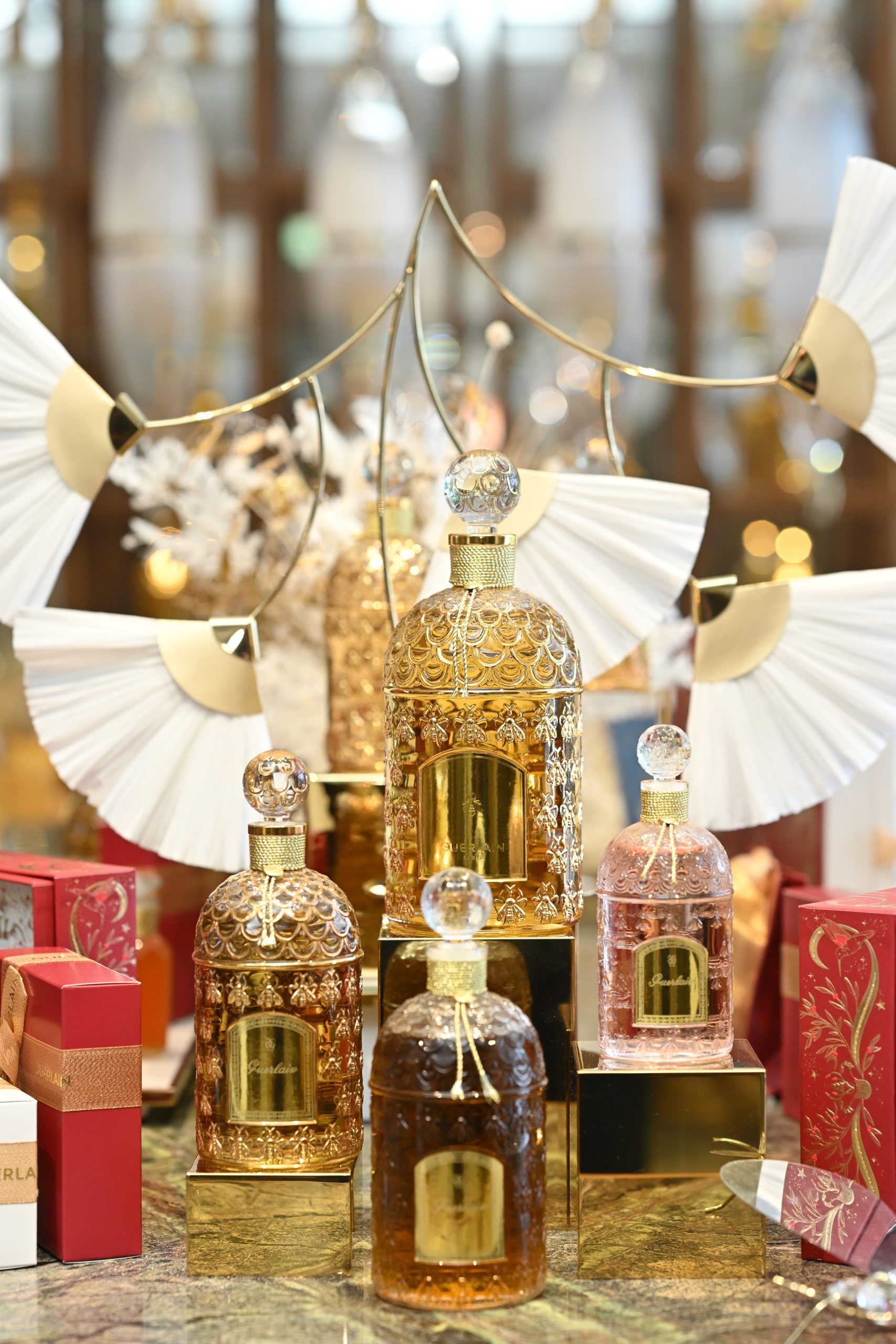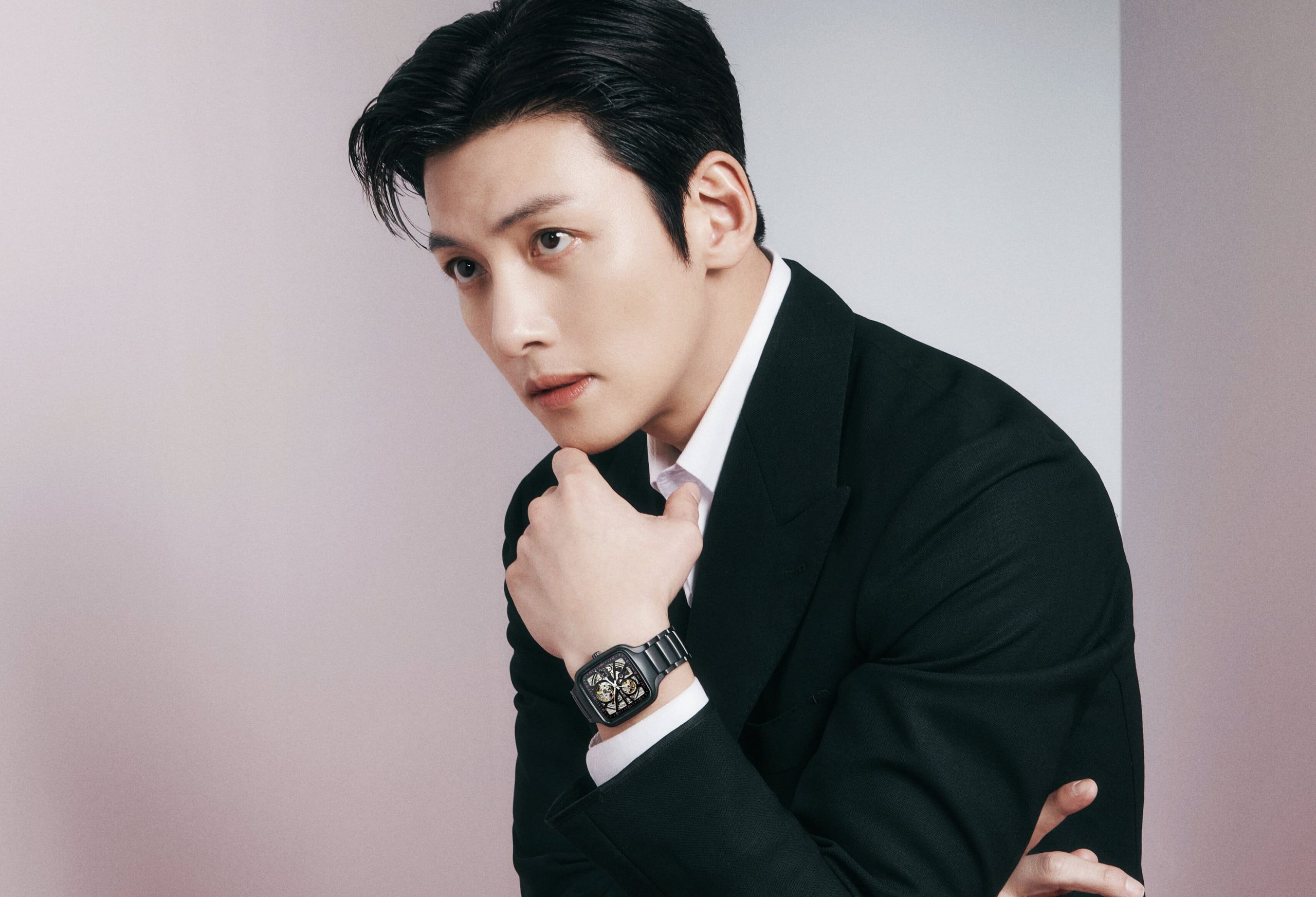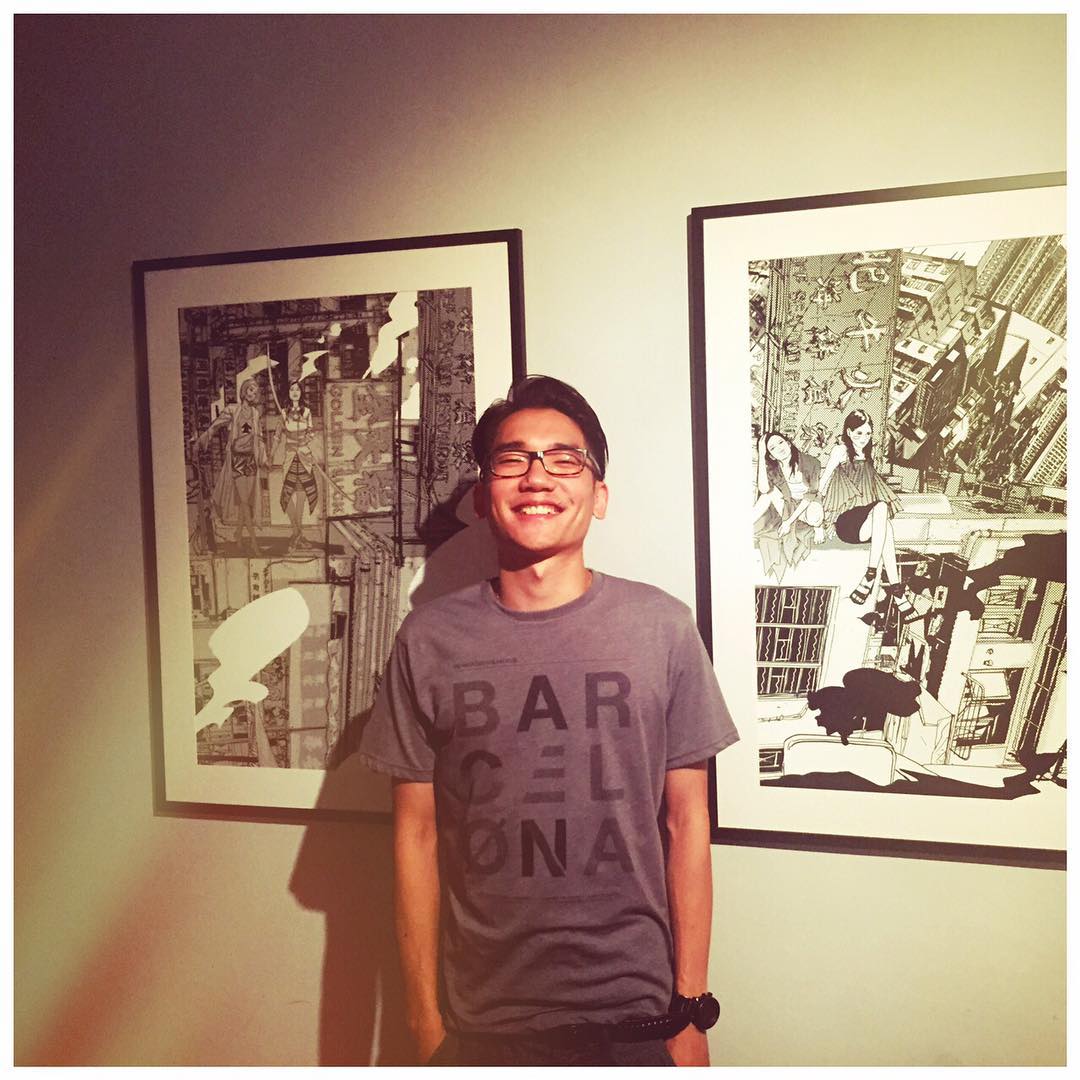Contemporary design was in the spotlight last month with a series of groundbreaking exhibitions at West Kowloon Cultural District. SaloneSatellite’s Marva Griffin along with local designers Dennis Cheung and Jacqueline Chak talk to Jaz Kong about creating objects that make an impact

A sustainable vision
Hong Kong has a robust and talented furniture and lighting design community, and it’s not difficult to encounter its members at various design festivals around town. However, it’s quite rare for their designs to appear in the same venue, akin to an artists’ group show at a gallery. This made the ‘Hong Kong Design Annex’ Exhibition,
held a week before SaloneSatellite at West Kowloon, all the more exceptional. Organised by Designworks Foundation and curated by award-winning interior design duo Lim + Lu, the exhibition highlighted the unique perspectives and creative prowess of 10 Hong Kong-based visionary talents in the realm of furniture, lighting and product design.
Vincent Lim and Elaine Lu created the perfect stage for the designers and studios with an enchanting “infinity bamboo forest” made from fresh bamboo, with reflective surfaces on the floor and ceiling creating a mesmerising interplay of light and shadow. Right in the middle of this bamboo forest was the world’s first-ever sustainable mahjong set. Edit Mahjong was created by Editecture, a multidisciplinary practice founded by Jacqueline Chak and Genevieve Chew that combines “Edit + Architecture in creating happy design and a joyful spatial experience”.
Chak says the Edit Mahjong set, which is made using excess and off-cut fabrics from her and Chew’s womenswear brand Edit and is 100% biodegradable, was born out of the pandemic. “Some friends started playing mahjong together during COVID and we kept doing it for over a year, even after lockdown,” she explains.

“What I found interesting is that, in spite of the separation and disconnection we generally felt during that period, mahjong actually brought us closer together. It has always been more than just a game for me. Because of my grandmas on both parents’ sides, it is something very dear to my heart. They taught me how to play, and with my maternal grandma passing away during the pandemic and my paternal grandma now bedridden, mahjong has a lot of sentimental value to me. It reminds me of them, especially what I call ‘the sound of happiness’, as mahjong is often a festive entertainment at celebrations and banquets.”
Both sides of Chak’s family are from Shandong province, and Chak recalls hearing their shared language, especially the swear words, during games. It’s something she still hears in the back of her mind when she plays now. “Although I’m not very good at playing mahjong, I still wanted to capture these beautiful memories through something – that’s the idea of Edit Mahjong,” she says.
Also see: SaloneSatellite designers on good design (part 1 of 3)
To make the set, Chak and Chew upcycled 30kg of leftover fabrics into mahjong tiles, using biodegradable resin as binder. Chak tried as much as possible to stay true to a traditional mahjong tile, especially the size and sound from “washing the tiles” (turning them upside down and mixing them randomly). She had an idea to modernise the suits and fonts, “but then I chose to stick with the original styles, as I wanted to recreate my grandmas’ gesture when they ‘blind feel’ the tiles by sensing them with their thumbs. I tried to ask the two remaining mahjong-crafting masters to carve the tiles for us, but our tiles were too soft. We had to laser cut the content, but I’m happy with the results.”
Creating the mahjong set was only the first step. With support from Hongkong Land, Editecture hosted live games at Belowground for two months. Joyce Boutique saw it and loved the idea, giving Editecture outdated fashion pieces from Dries Van Noten, Thom Browne, Raf Simons and more to create bespoke mahjong sets for their VIPs. Chak almost couldn’t believe it. “It felt insane to shred clothing from these brands!” she exclaims. “Everybody was upset or emotional, and people were very divided. Hence, we called it ‘Better Together’,” Chak recalls. “We were still under quarantine, but this game has always been embedded with collective memory, traditions and culture, and required both technique and fun. It is something to be done during happy times and celebrations, by anyone and everyone regardless of gender.”

The Edit mahjong set exemplifies Chak’s commitment to creating meaningful and sustainable designs. “This is a good mix of traditional culture and sustainability, which is exactly what our modern world needs, because it encourages ‘generational interaction’,” she says. “Imagine when a grandmother teaches her granddaughter how to play. While the philosophy and know-how of the game is passed on to the younger generation, it’s also a chance for the grandchild to educate the older generation by showing them this is an eco-friendly mahjong set. It’s easier to open up discussions such as upcycling and sustainability. This multi-generational communication and knowledge exchange
is what we need for us to evolve.”
Despite her passion for sustainable design, Chak admits it can be a challenge both technically and financially. While she was successful in convincing clients to use sustainable materials, “after some research, we realised these can only be imported from overseas countries such as the UK or Netherlands. The carbon footprint generated didn’t make sense for us to proceed, and it felt like a slap in the face,” she says. “Nike has been doing similar projects and they had a factory in China, but the quality wasn’t good. So I knew that was our moment to create our own sustainable designs. I bought two machines from Russia and Australia, put them in our office and started experimenting.”
That was seven years ago and the start of [Re] Edit Lab, “a space to recreate and craft meaningful products with upcycling materials, bio-reengineering, wood crafting and other innovative methods, as well as design solutions.” From a small lab in Wong Chuk Hang to catching the eye of Plastic Odyssey, the global maritime expedition dedicated to combating plastic pollution, Editecture deserves a pat on the back for their achievements.

Chak attributes the success of [Re] Edit Lab to her training as an architect, especially when it comes to upcycling projects for the Upper House, Tai Kwun and Art Basel Hong Kong. “Take Art Basel’s UBS Art Studio for children as an example. It was created with 3D printing using 150kg of RPET upcycled plastic, with a concept of showcasing an event space with minimal waste as a design feature,” she says. “After the event, most of the multifunctional structures and furniture were reused or repurposed and donated to the community. My ability to consider both pre- and post-design comes from my training. Over the past two years, we have donated about 200 pieces of furniture to local communities and local schools on behalf of UBS.”
Circular design is important, and it’s certainly central to Chak’s mission. But even more important is raising awareness and making a difference. “People constantly ask us whether we make any profit on our projects. But Editecture is here to push boundaries and to do more than is required,” she says.
“Sometimes it’s not about the money, but the ripple effect. Some people’s goal is to earn every penny they can, but for us, our ROI is how much impact we’re making. Sometimes we get noise, sometimes we get awareness. And what I love about sustainable design or products is that each one comes out differently. Each mahjong tile is a little different from the others, each one of them is unique. They are not mass produced in a mould.
I think that’s beautiful. And once people learn about the magic in turning something they saw as ‘waste’ to ‘wonder’, they will start to be aware – and it’s that awareness that truly counts.”
Also see: SaloneSatellite designers on good design (part 2 of 3)





